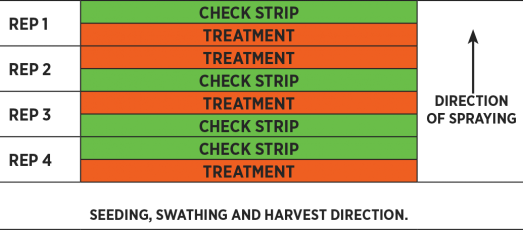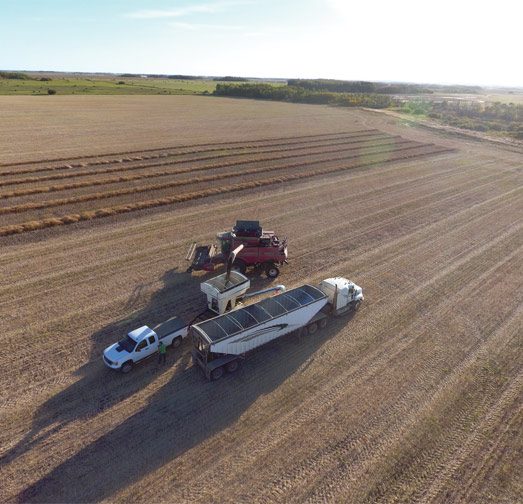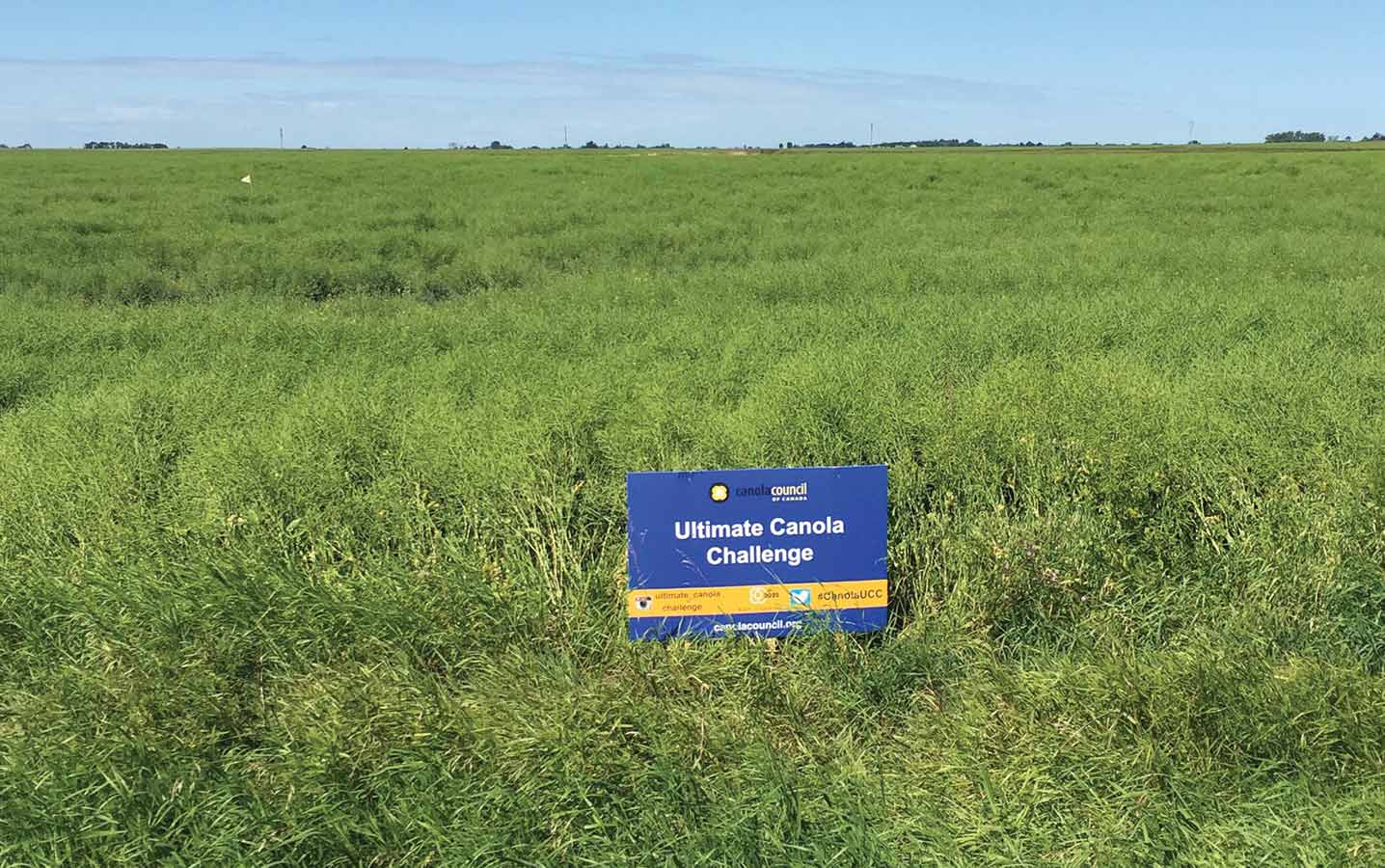How to run a field-scale trial
Step 1: Set an objective
For example, you may want to determine whether the addition of a specific input provides an economic increase in yield or quality. That would be a one-variable trial comparing standard practices – the check – to standard practices plus this one additional input or technique.
Another objective could be to see whether a new product or technique is best applied at different times or in different formulations. In this case, this would require a three-part trial: the two tests plus a check strip of standard practices to provide a baseline for comparisons.
Including a check strip, which is basically your standard best management practices, in the trial ensures that differences in crop performance in the treatments are actually due to the treatment differences and not naturally-occurring variation that usually occurs in any field.
Step 2: Carefully Choose a location
The selected field should be as uniform as possible in topography and soil. Soil sample the trial area, including for micronutrients if you’re doing a micronutrient trial. Prepare to replicate the strips at least four times across the trial area. (See the diagram.)
Step 3: Seed the trial
If you are testing a product not related to seed or seeding practices, use the same variety for all treatments, and seed at the same depth and speed. Make sure each strip in the trial, including the checks, are wider than the swather or combine straight-cut header. This will reduce edge-effect when harvesting.
Step 4: Manage throughout the season
Follow best practices for weed, disease and insect control and apply the same treatments across all strips. Scouting the trial weekly will help make informed crop management decisions and allow you to observe any visual differences between the treatment and check. Spray perpendicular to the direction of seeding to leave the same tire tracks in each trial.
Step 5: Harvest
When swathing or straight-cutting, leave a four-foot (or more) buffer between the products where they meet in the field to be sure that a “true” test is being done to compensate for possible mixing of the products along the split line. This is why seeding strips wider than the swather is important.
After swathing each treatment, the rest of the field can be swathed. Make sure the swather passes that represent the trial have been marked.
When combining, use a weigh wagon to get the most accurate yield data. Some local agronomists or retail outlets may have weigh wagons for rent. Calibrate the wagon prior to harvest. Start with an empty hopper and prime it using surrounding canola, then empty it. Harvest and weigh each strip separately.
Measure the exact length and width of the strips. If there were noticeable differences in maturity between strips, keep a grain sample in a zip-lock bag from each strip and measure moisture content later.
When calculating yield, remember…
- To get total bushels per strip = Take weigh wagon weight in pounds and divide by 50.
- To get total acres per strip = Multiply strip length in feet by total width in feet and divide by 43,560 (the square feet in an acre).
Yield (bu./ac.) = Total bushels (1) divided by total acres harvested (2).

Step 6: Keep detailed records
Keep all notes with regard to variety, seeding date, rate, fertilizer and conditions. Record weather events, such as hail, frost, excessive heat, excessive humidity and excessive rain.
For more specific protocols on how to set up a foliar-product trial or a nitrogen-rate trial, visit the UCC website. The site also has a “Note Collection File” to help keep accurate records throughout the season.






